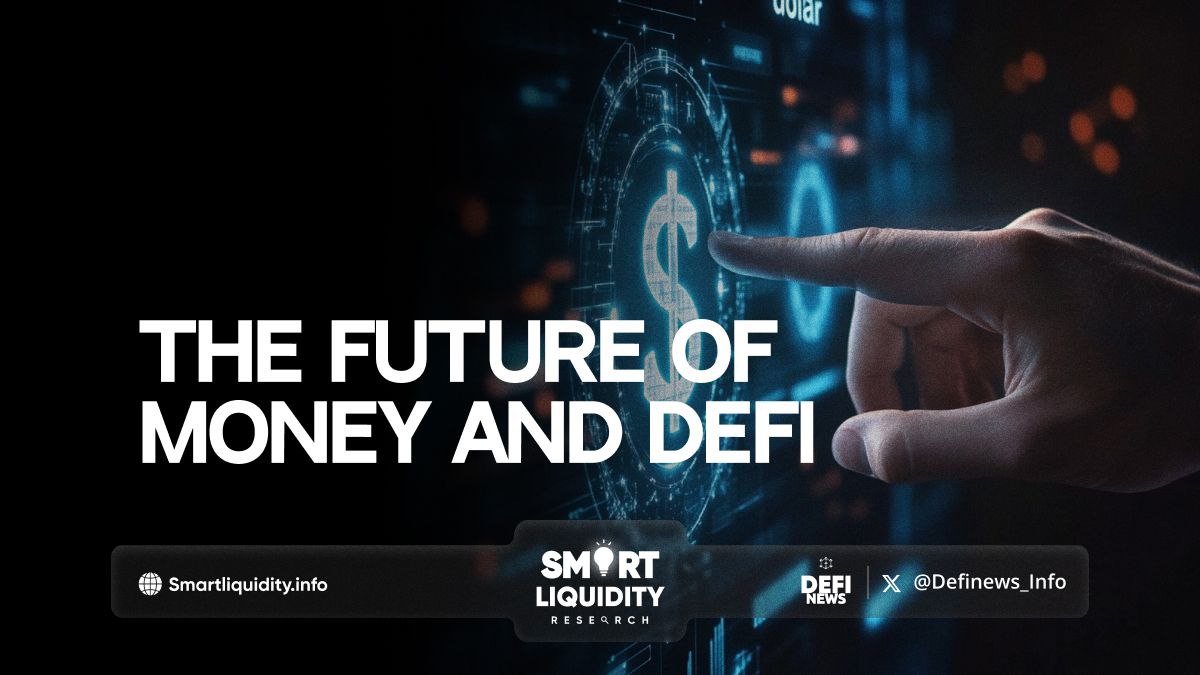The Future of Money and DeFi: A Financial Revolution in the Making


The Future of Money and DeFi: A Financial Revolution in the Making! As we stand at the crossroads of a rapidly evolving financial landscape, the concept of money itself is undergoing a monumental transformation. Decentralized Finance (DeFi) is at the heart of this shift, promising to reshape not only how we view money but also how we interact with financial systems.
By leveraging blockchain technology, smart contracts, and decentralized protocols, DeFi offers an alternative to traditional banking that could democratize finance, foster innovation, and create new economic opportunities.
In this article, we’ll explore the future of money through the lens of DeFi and examine the profound implications this movement holds for the global economy.
The Evolution of Money
Money, in its traditional form, has been a central pillar of economic systems for millennia. From bartering systems to gold, paper currencies, and digital transactions, the essence of money has always been tied to a centralized authority, such as governments or banks. However, with the advent of blockchain technology and cryptocurrencies like Bitcoin and Ethereum, we are witnessing the birth of decentralized money—assets that are not controlled by any single entity but instead operate on peer-to-peer networks.
DeFi takes this concept a step further by decentralizing the entire financial system. Through DeFi protocols, users can borrow, lend, trade, and invest their assets without relying on intermediaries like banks or brokers. This emerging ecosystem offers unparalleled transparency, security, and efficiency, and it has the potential to redefine our understanding of money.
How DeFi is Disrupting Traditional Finance
Traditional financial institutions, with their layers of bureaucracy, fees, and limitations, have long been the gatekeepers of economic activity. DeFi, on the other hand, breaks down these barriers.
Here’s how:
- Decentralized Lending and Borrowing
In traditional finance, borrowing and lending require the involvement of banks, credit checks, and paperwork. In DeFi, protocols like Aave and Compound enable users to lend their assets and earn interest or borrow against their crypto holdings without a centralized authority. This allows for faster transactions and lower fees. - Permissionless Finance
DeFi is accessible to anyone with an internet connection. There’s no need for credit checks, minimum balances, or stringent regulations. This opens up financial services to the unbanked and underbanked populations, fostering financial inclusion on a global scale. - Smart Contracts and Automation
DeFi leverages smart contracts—self-executing code on the blockchain that automatically enforces the terms of a financial agreement. This eliminates the need for intermediaries and reduces the risk of fraud or mismanagement, offering users greater autonomy and trust in the system. - Yield Farming and Liquidity Mining
DeFi introduces innovative ways for users to earn returns on their assets. Yield farming allows users to provide liquidity to decentralized exchanges and earn rewards, while liquidity mining involves earning tokens by supplying liquidity to a protocol. These mechanisms create incentives for participation and drive the growth of the DeFi ecosystem.
The Future of Money: DeFi and Beyond
As DeFi continues to evolve, it’s becoming clear that the future of money is decentralized, programmable, and borderless.
Several trends are shaping this future:
- Stablecoins as Digital Dollars
Stablecoins like USDC and DAI, which are pegged to the value of a fiat currency, are becoming increasingly important in DeFi. They provide a bridge between traditional finance and decentralized systems, offering users the stability of fiat with the benefits of blockchain technology. As governments explore central bank digital currencies (CBDCs), stablecoins could serve as a blueprint for the digital money of tomorrow. - Tokenization of Real-World Assets
DeFi is expanding beyond digital currencies. Through tokenization, real-world assets like real estate, stocks, and commodities can be represented on the blockchain. This unlocks liquidity, enables fractional ownership, and makes these assets accessible to a global audience. - Interoperability and Layer 2 Solutions
The future of DeFi hinges on interoperability between different blockchains. Projects like Arbitrum, Polkadot, and Cosmos are working to create cross-chain solutions that allow seamless interaction between multiple networks. Layer 2 scaling solutions will also enhance the efficiency of DeFi by reducing transaction costs and improving speed, making decentralized finance more viable for everyday use. - Regulation and Mainstream Adoption
While DeFi offers incredible potential, regulatory uncertainty remains a challenge. Governments and regulators are grappling with how to oversee decentralized systems while maintaining the core principles of DeFi. Striking the right balance between regulation and innovation will be key to ensuring that DeFi can achieve mainstream adoption while maintaining its decentralized ethos.
The Road Ahead
The future of money, as envisioned by DeFi, is one where financial power is no longer concentrated in the hands of a few but distributed among many. As blockchain technology continues to mature, we can expect DeFi to become a cornerstone of the global financial system, offering a more inclusive, transparent, and efficient alternative to traditional finance.
However, this transformation will not happen overnight. Challenges such as scalability, security, and regulatory compliance must be addressed before DeFi can fully realize its potential. Yet, the momentum is undeniable. DeFi is no longer just a niche interest for crypto enthusiasts; it’s a burgeoning industry that is reshaping the way we think about money and finance.
In conclusion, the future of money lies in decentralization. As DeFi protocols continue to innovate, they will redefine the very nature of financial transactions, empowering individuals and creating a more equitable global economy. We are witnessing the dawn of a new financial era—one that promises to make finance more accessible, open, and decentralized for everyone.




